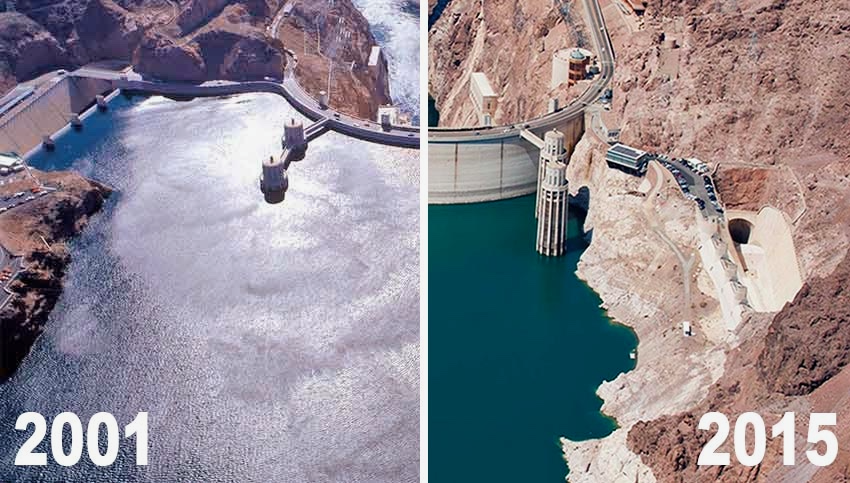Megadrought in the Colorado River Basin
Declining water levels in two of the largest reservoirs in the United States, Lake Powell, and Lake Mead, provide visible evidence for the 2000-2021 megadrought (a period of extreme dryness that lasts for decades) in the Colorado River Basin. Scientists studying weather and climate in this region are analyzing temperature and precipitation patterns over time to determine the root cause of the ongoing megadrought. After analyzing authentic datasets, students come to the conclusion (as scientists have also done), that rising temperatures and the resulting increase in evapotranspiration rates are largely responsible for the megadrought in the Colorado River Basin.
In this asynchronous virtual workshop, we will review strategies for how to facilitate the Megadrought in the Colorado River Basin Data Puzzle in your middle and high school science classrooms. Participants will engage with the teaching materials (teacher guide, slide deck, student worksheet, and answer key) from both the teacher and student perspective and upon completion, be prepared to implement the Data Puzzle in their classroom.
Participants who complete and submit specified workshop tasks will receive a 3-hour PD certificate from the University of Colorado Boulder.
Explore this resource on the Data Puzzles website

Between 2001 and 2015, Lake Mead’s water surface elevation dropped by over 143 feet. Image from the National Park Service.

